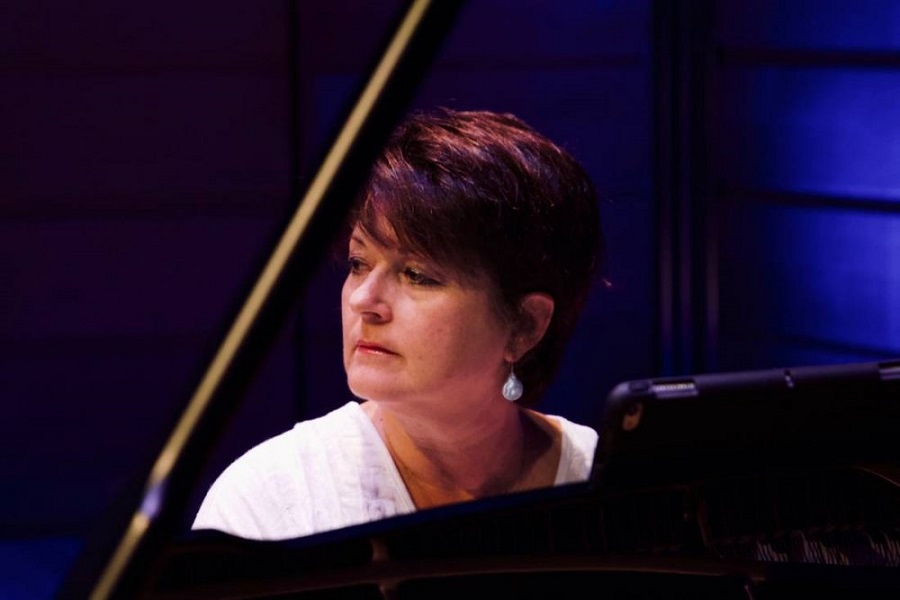
Abstraction in painting is surely one of the greatest gifts of 20th century art. Loved and hated wherever it travels, there are few people who don’t have an opinion about it.
Terence Maloon is one of Australia’s most admired curators, famous for his 24-year stint at the Art Gallery of NSW and, in particular, for a major exhibition on abstract art. Sydney’s loss was our gain when he arrived at the ANU Drill Hall Gallery as director in 2013, unleashing a whirlwind of intellectual activity.
He retired last winter, but you wouldn’t know it, as he’s been at the centre of many discussions, talks and lectures following his departure.
Now, as the venerable gallery undergoes remediation, Maloon is embarking on a series of lectures to keep the flag flying until the gallery opens to the public again.
“I feel such a strong sense of attachment to the Drill Hall,” he tells me when we catch up.
”I’m linked through friendship as well as professional relationships, the ongoing gifts of art to the university and things like that – I’ve left physically, but I’m still there in spirit.”
At age 73 and experiencing some serious health issues, he took time off to convalesce, of which he says: “I felt it was unfair on the staff and to be honest I was expecting worse to come, but that has not transpired… Everything settled down, and I’m back to my normal position, which is basically being busy.”
Busy indeed. His lectures have already begun with a reflection on Balzac’s 1831 short story, Unknown Masterpiece.
They will continue in May with a look at American-born painter James Whistler, followed by lectures on Monet and Cézanne, on poetic abstraction (focusing on portraits of poet Stéphane Mallarmé), on Gauguin’s graphic legacy from Munch to Kandinsky (a well-timed accompaniment to Gauguin’s World: Tōna Iho, Tōna Ao running at the NGA from June to October) and finally this year, Vuillard and the possibility of abstraction.
The series picks up again in March 2025 with a look at Cézanne’s posterity, Fauvism, Cubism, art after the conquest of the air, the new “nature” – art and science and the proliferation of abstraction in a time of war.
An Englishman by birth, Maloon has lived in Australia since 1980 and made his mark as senior curator of special exhibitions at the Art Gallery of NSW until he was made redundant after the departure of director Edmund Capon.
In 2008, he curated an exhibition called Paths to Abstraction, covering the evolution in European art from 1967 to 1917, a 50-year span from the era of Whistler and leading up to the advent of purely abstract painting.
Since 2008, he’s had plenty of time to ponder the significance of Whistler and his famous public stoush with art critic John Ruskin, which ended in a court of law.
Ruskin had publicly critiqued a painting by Whistler, writing: “[I]never expected to hear a coxcomb ask two hundred guineas for flinging a pot of paint in the public’s face.” A bit like the headline about Jackson Pollock’s Blue Poles which read: ”Drunks did it.”
Whistler prevailed in law, but was awarded just a single farthing.
A court case is gold to an art historian and a lot of the artist’s justifications showed a startling difference in Whistler’s art from say, the Pre-Raphaelites. He was a cosmopolitan with many contacts in France, and a visionary for his time, emphasising the artist’s duty to create aesthetically pleasing things to the exclusion of all else.
Another important aspect of Maloon’s coming lectures is the Aussie angle. Maloon believes the so-called impressionists in Australia such as Tom Roberts and Frederick McCubbin, were barely aware of what was going on in France; their ideas came from Whistler.
Abstraction, he says, was not a new movement or a novel idiom but was the outcome of a continual stripping-down.
Sure, the first “non-objective” paintings were associated with modernist movements such as Cubism, Fauvism, Futurism and Expressionism, but the arrival of abstract painting was acted out over half a century with an increasing focus on the materiality of painting – shapes and colours – resulting in a simultaneous eruption of non-referential paintings in Paris, Milan and Zürich.
Of course, there were furious debates about Picasso and great antipathy shown to Matisse, but the arrival of abstraction, Maloon says, was almost a non-event, with most of the controversy relating to the distortion of human figures.
He is adamant that this lecture series is not the book resulting from his 2008 exhibition.
“It’s greatly expanded in terms of visual material, and I’m bringing in the question of the repercussions for Australian art… The whole thing is intended to be a visual education lecture series to cover the incredible changes in art over 50 years,” he says.
The 50 years that changed painting 1867-1917, Coombs Lecture Theatre, ANU. Details at dhg.anu.edu.au
Who can be trusted?
In a world of spin and confusion, there’s never been a more important time to support independent journalism in Canberra.
If you trust our work online and want to enforce the power of independent voices, I invite you to make a small contribution.
Every dollar of support is invested back into our journalism to help keep citynews.com.au strong and free.
Thank you,
Ian Meikle, editor








Leave a Reply